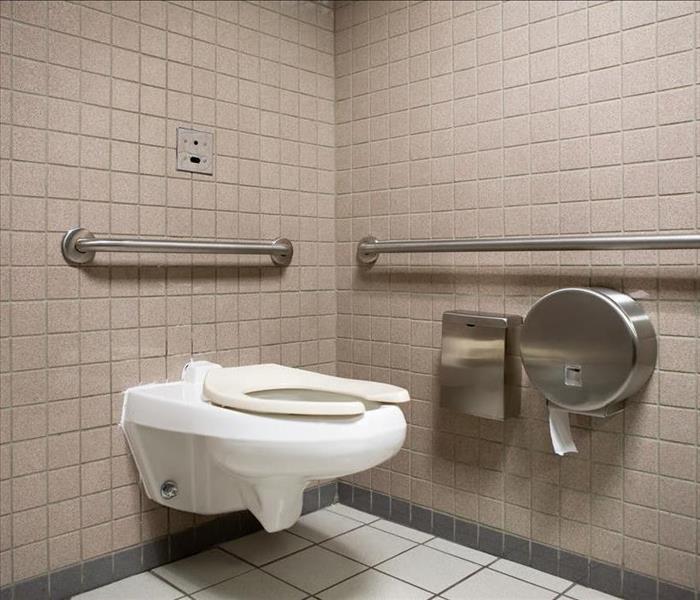How Do I Stop a Toilet That Won’t Stop Flushing?
9/13/2023 (Permalink)
Running a business in Bountiful, UT, comes with various responsibilities, some of which can be quite an annoyance. A toilet overflow is terrible enough, but what about a commercial toilet with a faulty flushometer? As easy as they usually make life, like anything, things can sometimes go wrong with a flushometer. One common problem is the "never-ending flush," when the flushometer constantly runs water into the toilet with no sign of stopping. This can quickly waste hundreds of gallons of water and run your company's water bill through the roof. It can also take your only toilet out of commission for your employees and customers. Fortunately, it can often be an easy fix, so you probably won't have to worry about calling a plumber.
Fix a Faulty Flushometer To Avoid a Toilet Flood
These instructions are for repairing a manual flushometer. Taking these simple steps should solve your problem.
- Shut Off the Water
First, you must shut off the toilet's water supply. You will typically need a flathead screwdriver for this job. You should see a screwdriver slot on one side of the flushometer. If you don't see a screwdriver slot, it may be hidden under a decorative cover. In this case, you should be able to pry the lid off with little effort to access the screwdriver slot. This will help avoid a leak while you work, particularly with a constantly running toilet.
- Remove the Flushometer Lid
Next, you will need to remove the top lid of the flushometer. You will probably need a wrench to loosen the cover, but it should screw off with ease once it's loosened.
- Remove the Flange Cover
You will now need to remove the flange cover. This can sometimes get a little messy with the accumulation of water that will come out when you take the lid off. Be sure to have a towel on hand.
- Remove and Clean the Gasket
Under the flange cover, you will find a gasket. You will also probably notice a lot of sediment on the gasket. Remove the gasket and wash it thoroughly. Look closely, and you will see a weep hole built into the gasket. Although tiny, this hole is there for a reason and could be the main issue with your flushometer's poor performance; the weep hole helps control the suction of the toilet. To help avoid a toilet overflow, you'll need to clean the weep hole port with an unbent paperclip, needle, or some other object that is very small in width.
- Reinstall the Gasket and Reassemble the Flushometer
Now that your gasket is clean reinstall it and reassemble the flushometer. Just go in the reverse order of the above instructions to ensure it's assembled correctly.
- Test the Operation of the Toilet
Once the flushometer is put back together, test the toilet to see if the problem has been solved. If it is still not working correctly, it probably means the gasket is worn or damaged and needs replacement.
Sometimes you can't stop a toilet in time to keep it from overflowing. When this happens, it's nice to have the contact information for local water damage restoration specialists. After a toilet overflow, these professionals will ensure the affected area is thoroughly cleaned and sanitized.






 24/7 Emergency Service
24/7 Emergency Service